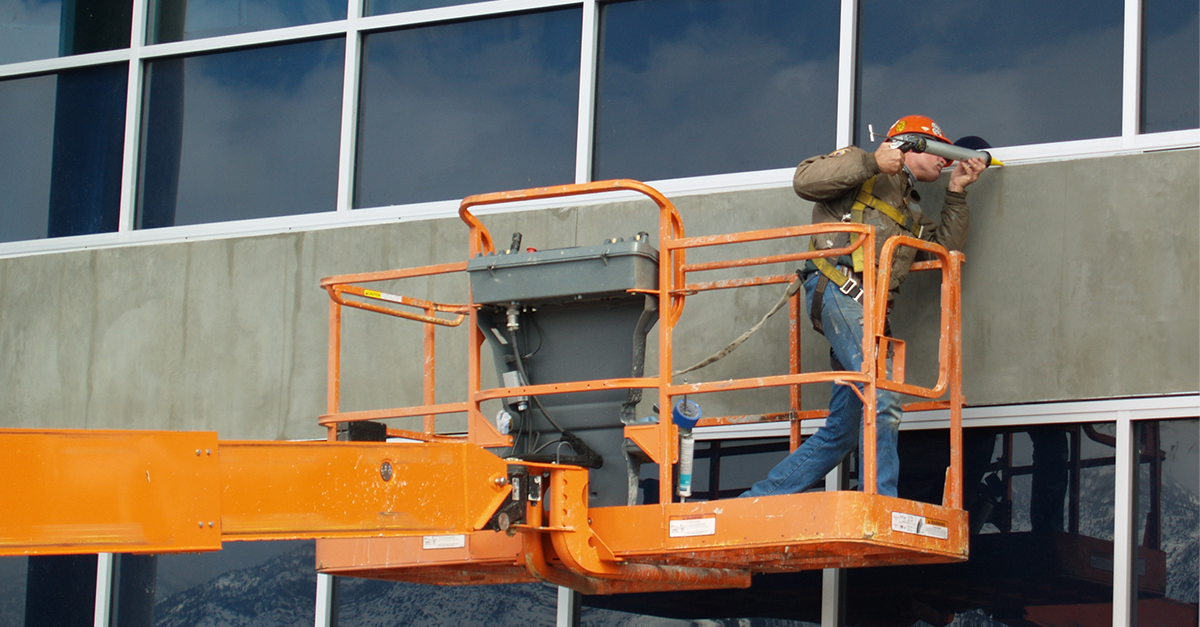While many facility managers commit to renovating a building’s interior by applying a fresh coat of paint or replacing stained carpets, they often neglect external issues that need addressing, let alone put a plan in place to maintain and preserve the outdoor space.
It’s imperative to create an exterior maintenance plan that goes far beyond trimmed hedges and swept pavement. Doing so will protect the entire facility from harmful conditions, such as pests, water infiltration, and mold, and will also save you money in the long run.
When reviewing your workplace resolutions and preparing an exterior maintenance plan, here are five important outdoor items to include:
Routine Roofing
As roof is the most exposed part of a facility and the first to endure damage from extreme natural disasters and daily weather conditions. Without routine maintenance, any minor roof decay and deterioration can turn into major structural issues and interior damage, ultimately becoming a costly and time-consuming responsibility.
To avoid this headache, building managers can incorporate preventative maintenance measures, such as visual inspections after every rainfall, whether the facility experienced a light rain or torrential downpour. Since water is the leading cause of roof failure, it is important to monitor the building’s drainage system and be sure the gutters are clear of debris. Pay close attention to any areas that are susceptible to puddling and natural leaks to make sure water is not accumulating there for more than 24 hours.
Lawn and Landscaping
While some facility managers living in the Midwest may pay extra attention to their landscaping during the warmer and drier summer months, ongoing care should be practiced all season long, regardless of the region. When incorporating lawn and landscaping into your exterior maintenance plan, start by identifying any high-risk areas that require the most care, such as spaces prone to flooding and trees close to entryways that have experienced damage from storms. Work with your maintenance team to tidy up the landscaping throughout the year by mowing, laying down fresh mulch, and weeding and trimming plants. Depending on the type of grass and vegetation surrounding the facility, it’s important to put a watering schedule into place to preserve those elements.
Tuckpointing and Caulking
At first glance, a brick building’s exterior appears firm and sturdy. However, after time and exposure to changes in weather, even brick is not immune to erosion. Tuckpointing and caulking are two simple, yet effective procedures facility managers can incorporate into an exterior maintenance plan to address any evident cracks or openings on the outside walls.
Quarterly inspections are recommended to identify the areas that need to be resealed. If building cracks are not addressed in a timely manner, they can lead to brick movement, issues with the foundation, and internal water seepage.
Window Sealing
Beyond routine window washing to keep glass looking spotless, it’s also imperative to inspect the indoor and outdoor framework of all windows. With seasonal changes and weather elements coming into play, a window’s frame can start to decay and create gaps in the foundation—perfect pathways for cold drafts, water, and insects to creep inside.
As part of your facility’s exterior maintenance plan, be sure to periodically check the caulking around the window frame, fill in the gaps, and replace any caulking that has dried out and is ineffective.
Sidewalks
Think about all the employees and visitors who use the sidewalks throughout the year. When they see cracks along the pathways, it’s not only an eyesore and a poor reflection on the building manager, it’s a threat to their safety.
To keep tenants, employees, and visitors from tripping over cracks and uneven pavement, have your maintenance team conduct regular sidewalk inspections to determine any repairs that need immediate attention. Small concrete cracks should be patched with compound or caulk as soon as they are visible. This type of quick action is a preventive way to avoid larger damage and potential lawsuits.
In addition to monitoring foundational issues, you may also choose to add yearly sidewalk pressure washing into your maintenance plan to keep up the pathway’s appearance and remove any built-up stains.
Create Your Plan
While it’s nearly impossible to predict any exterior damage that will result from natural disasters or workplace accidents in the year ahead, it is possible for facility managers to have a preventative plan in place to mitigate the risks and maintain the property. The best way to make sure outdoor maintenance items don’t fall through the crack is to build out a calendar at the beginning of the year to keep pace with the upkeep. Here’s how to start one:
- Build a checklist of outdoor areas that require attention (roof, lawn, sidewalks, windows, etc.).
- Prioritize the areas into categories depending on when action is needed. If there are already high-risk areas to address, schedule those projects early in the year.
- Work with your maintenance team to determine which services should be completed on a weekly, monthly, or quarterly basis. Take into account any seasonal changes and larger renovations that need to be scheduled.
Need help getting started? Below is a sample checklist of exterior task frequencies to help get your calendar started:
Routine
- Gutters: Clear of debris
- Lawn care: Weeding, trimming, watering (seasons may impact frequency)
- Sidewalk: Inspect for uneven pavement and cracks
- Trash and recycling: Pick up and emptying of bins
Quarterly
- Facility exterior: Caulk cracks and inspect bricks
- Windows: Check caulking around frames
- Irrigation systems: Inspect for damage to prevent building erosion and structural damage
- Exterior signage: Check for missing or damaged emergency and informational signs
- Exterior doors: Inspect for damage and clear passageways
Annual
- Pavement and building exterior: Pressure wash
- Lawn care: Plant foliage
- Salt and ice melt: Check supply and order materials in advance
- Painting: Fences, window exteriors, etc.
- Exterior lighting: Swap out faltering bulbs and ensure proper illumination across the property.
Conducting simple preparations and routine care on your building’s exterior will ensure your facility remains safe and appealing to all who enter. If you do not have an exterior maintenance plan in place already, take this opportunity to create one and commit to ongoing improvements.




